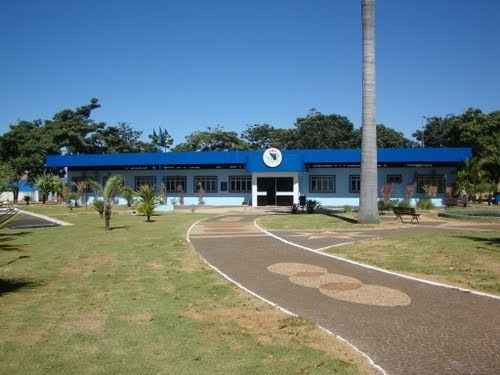Elevation 877 m (2,877 ft) Area 2,463 km² | Time zone BRT/BRST (UTC-3/-2) | |
 | ||
Campo Alegre de Goiás is a municipality in southeastern Goiás state, Brazil. It is the largest producer of coffee in the state and an important producer of soybeans, corn, and wheat.
Contents
- Map of Campo Alegre de GoiC3A1s State of GoiC3A1s Brazil
- Geography
- History
- Demographic and political data
- Economy
- Economic data
- Health and education
- References
Map of Campo Alegre de Goi%C3%A1s, State of Goi%C3%A1s, Brazil
Geography
Campo Alegre is located in the statistical micro-region of Catalão. It is 326 km. from the state capital, Goiânia and is connected by BR-352 / Bela Vista de Goiás / Cristianópolis / GO-020 / Pires do Rio / GO-330 / Ipameri / Catalão / BR-050.
It has boundaries with Catalão (south), Ipameri (north and east), and Paracatu (east). Three rivers cross the municipality: Rio Veríssimo, Rio São Marcos and Rio Pirapitinga.
History
Campo Alegre de Goiás began as a stopping point in 1833 for the muleteers crossing the different routes in the province of Goiás. The first name was Calaça. It became a district of Ipameri in 1907. In 1944 the name was changed to Rudá, which means God of love in the local indigenous language. Later the name was changed back to Campo Alegre de Goiás when the town was detached from Ipameri and made a municipality.
Demographic and political data
Economy
The economy is based on agriculture, with important plantations of coffee, soybeans, wheat, corn, and cattle raising. There are also extensive plantations of eucalyptus, which is used to make charcoal and transported to the metallurgy industries of the Belo Horizonte industrial belt.
Economic data
Health and education
Campo Alegre has a relatively high standard of living. On the United Nations Human Development Index Campo Alegre had a rating of 0.802,which ranked it 9 out of a total of 242 municipalities in the state of Goiás. Nationally it was ranked 532 out of 5,507 municipalities. (All data are from 2000.) For the complete list see Frigoletto
